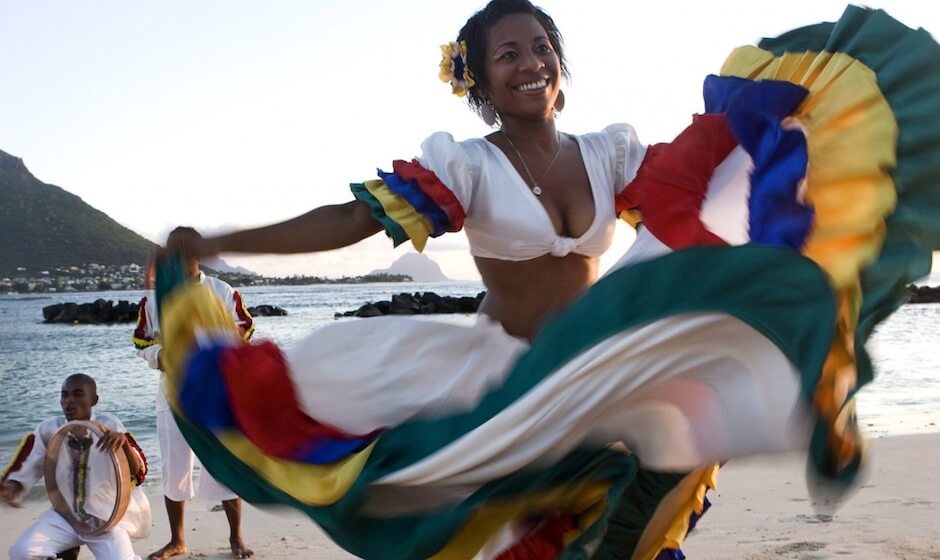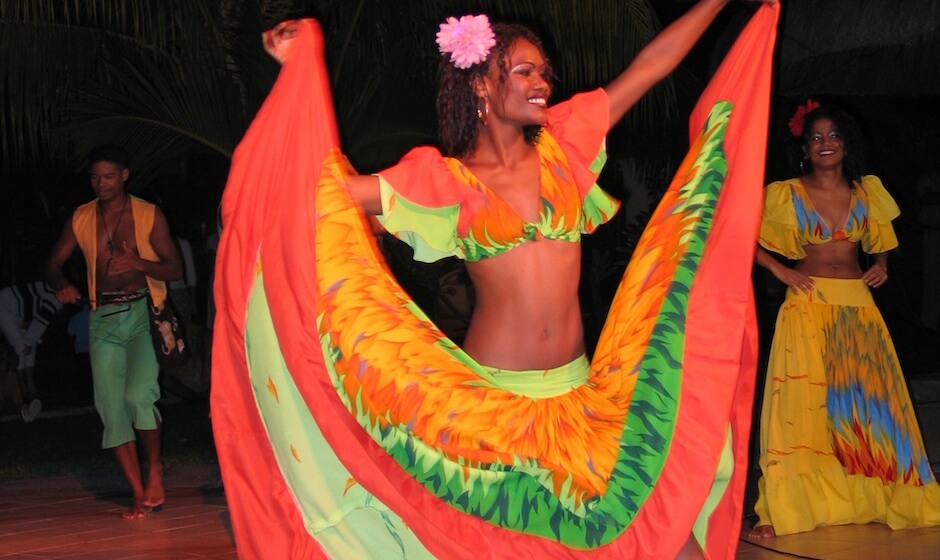The history of Sega music in Mauritius
As the music and dance most closely associated with Mauritius, Sega has evolved from its traditional, mostly-improvised roots to a modern-day version often fused with other genres like jazz and reggae. Originating centuries ago among the island’s African slave populations, it quickly spread throughout the Indian Ocean – to Reunion, Rodrigues, the Seychelles, Comoros and Mayotte – and used imaginative new instruments to bring the exhilarating rhythms to life, provoking an unquenchable urge to dance among its listeners.
The essence of the Sega beat comes from the combination of several core instruments, most notably the triangle, the maravane – a flat wooden rattle filled with small pebbles or dried nuts – and the ravane, a circular wooden drum frame covered with a taut piece of goat hide, often heated over a flame to tighten the membrane for a livelier sound and sometimes ringed with bells.
Lyrics are normally in Mauritian Creole, though sometimes in French, with a vocal melody usually sung in verse/chorus form. Around the middle of the last century, the addition of guitars, accordians, drums and trumpets reinvigorated the genre, and by the mid 1960s Sega had emerged from the confines of private gatherings to become openly popular throughout Mauritius.
Concert of 1964
One of the catalysts for this breakthrough was a now-legendary concert in 1964 known as the ‘Night of the Sega at Mount Le Morne’ - a musical and cultural event still looked back upon with fondness by older members of the Mauritian Creole community. On this night, a Sega contest was held and the man who went on to become one of Sega’s most famous sons was crowned the ‘King of Sega’.
Sega pioneers
Ti-Frère or ‘little brother’ (real name Jean Alphonse Ravaton) was born in 1900 in the district of Moka, and though he had already garnered some local renown – singing at beach picnics and parties, and taking part in local village sega tournaments – it was this event that brought him national awareness. From that point on, he was a well-known figure in Mauritius, though he was never able to make a living from his art, relying on his previous basic trades – wood cutter, boulder breaker, bus conductor – to see him through.
His best-loved songs include Anita, Roseda and Papitou, which you can hear in this video.
Making an impact around the same time was Jean Claude Gaspard, who shot to prominence after winning a TV talent show and recently retired after celebrating his 50th year in the music industry. His 200+ song legacy includes dozens of classic hits, many of which have been covered by younger artists, including his own musical family who – as is tradition – have been passed the Sega baton by their father. Other significant traditional Sega artists include Cyril Labonne, Roger Clency, Marie Josee Clency, Roger Augustin and Serge Lebrasse, who was introduced to Sega by Ti-Frére when they were working as woodsmen together.
Watch more videos here and here
For today’s visitor to Mauritius
Today, the visitor to Mauritius is never far away from Sega music, with many hotels and restaurants acting as venues for lighthearted Sega nights, often with an element of audience participation thrown into the mix. But the true spirit of Sega resides elsewhere; at small local gatherings, festivals, clubs and bars, passed down to a younger generation via the synthesis of Sega with reggae, ragga, dancehall, zouk and jazz. Popular artists who represent these contemporary manifestations of the Sega tradition include Laura Beg, Clarel Armel, Alain Ramanisum and Denis Claude Gaspard, son of the famous Jean Claude. Hear some of their musical offerings in the clips below.
Laura Beg, Clarel Armel, Alain Ramanisum, Denis Claude Gaspard



